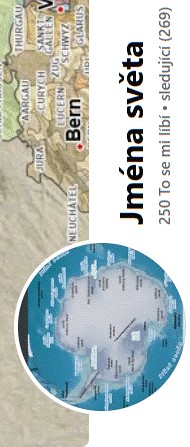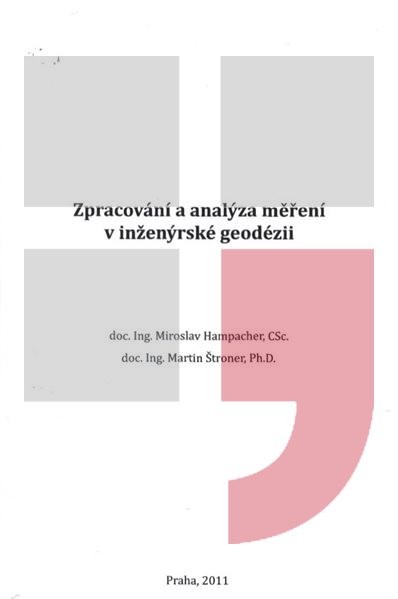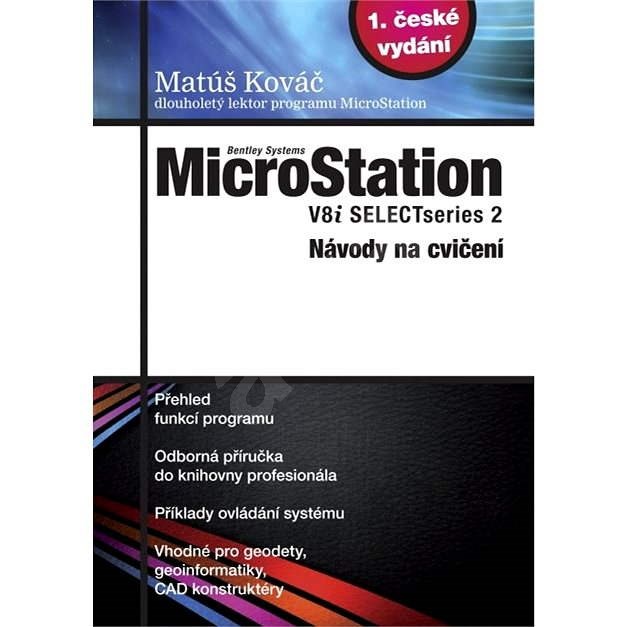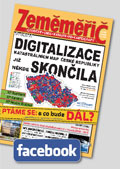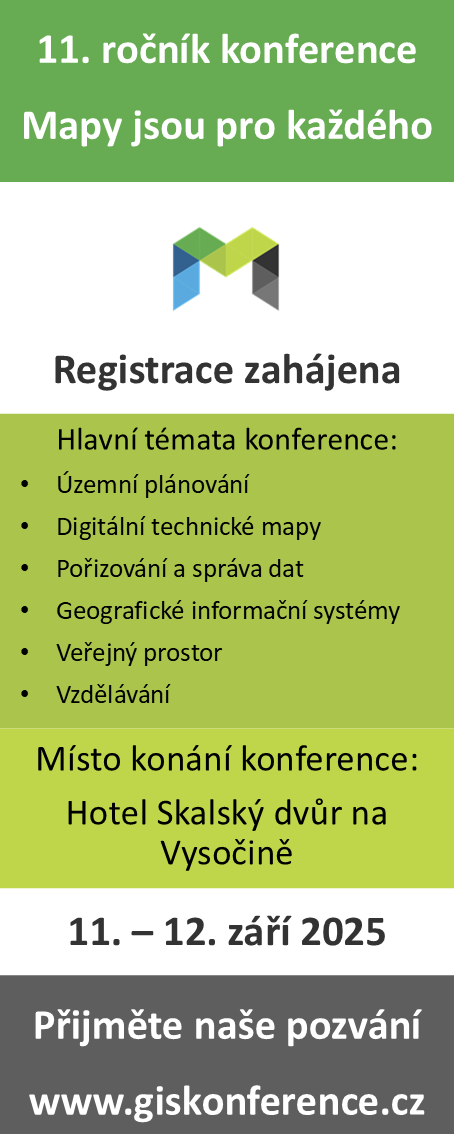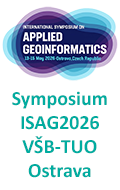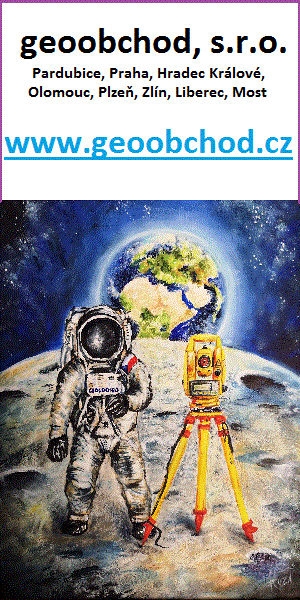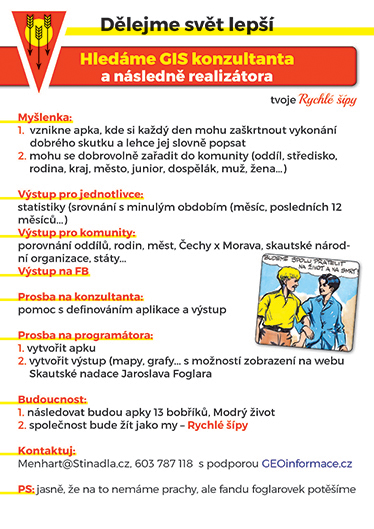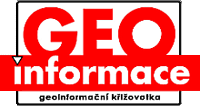zprávy
zdroje zpráv:Airbus Aerial And Swiss Re Corporate Solutions Team To Offer Flood Prevention Modeling Service
28.5.2019 18:57 GISCafe.com Webcasts-Webinars Collaboration will deliver service to help companies identify potential flood risk by analyzing aerial drone imagery and dataATLANTA, May 28, 2019 …
S&P CoreLogic Case-Shiller Index Shows Annual Home Price Gains Continue To Weaken
28.5.2019 18:56 GISCafe.com Webcasts-Webinars NEW YORK, May 28, 2019 — (PRNewswire) — S&P Dow Jones Indices today released the latest results for the S&P CoreLogic …Ponuka práce: Majetkovoprávne vzťahy so znalosťou GIS
28.5.2019 14:55 Geocommunity.skSlovenská správa ciest hľadá s okamžitým nástupom zamestnanca pre prácu s popisnými/geodetickými údajmi katastra nehnuteľností a správu informačného systému ESID System, ktorý slúži na majetkovoprávne vysporiadanie pozemkov s ostatnými vlastníkmi a správcami cestných komunikácií. Organizácia Slovenská správa ciest (SSC), Miletičova 19, 826 19 Bratislava Pracovná pozícia Hlavný odborný zamestnanec pre majetkovoprávne vzťahy Druh pracovného pomeru hlavný pracovný … … Čítať ďalej
Príspevok Ponuka práce: Majetkovoprávne vzťahy so znalosťou GIS zobrazený najskôr GeoCommunity.sk.
Ponuka práce: Majetkovoprávne vzťahy so znalosťou GIS
28.5.2019 14:55 Geocommunity.skPríspevok Ponuka práce: Majetkovoprávne vzťahy so znalosťou GIS zobrazený najskôr GeoCommunity.sk.
Ponuka práce: Majetkovoprávne vzťahy so znalosťou GIS
28.5.2019 14:55 Geocommunity.skPríspevok Ponuka práce: Majetkovoprávne vzťahy so znalosťou GIS zobrazený najskôr GeoCommunity.sk.
Ponuka práce: Majetkovoprávne vzťahy so znalosťou GIS
28.5.2019 14:55 Geocommunity.skPríspevok Ponuka práce: Majetkovoprávne vzťahy so znalosťou GIS zobrazený najskôr GeoCommunity.sk.
Ponuka práce: Majetkovoprávne vzťahy so znalosťou GIS
28.5.2019 14:55 Geocommunity.skPríspevok Ponuka práce: Majetkovoprávne vzťahy so znalosťou GIS zobrazený najskôr GeoCommunity.sk.
Letní škola – Recommender systems na informatice
28.5.2019 8:28 Katedra geoinformatiky UP OlomoucVe dnech 29. a 30. 5. 2019 (středa a čtvrtek) se bude na katedře informatiky konat letní škola sestávající ze série osmi tutoriálových přednášek na téma Doporučovací systémy (Recommender systems), které mají za úkol predikovat „hodnocení“ nebo „preferenci“ něčeho uživateli a na základě toho ji uživateli doporučit. Tohle zajímavé téma bude přednášet přední odborník z […]
The post Letní škola – Recommender systems na informatice appeared first on Katedra geoinformatiky.
20190528 odborný rada v oddělení právních vztahů k nemovitostem
28.5.2019 8:22 ČÚZK - předpisy a opatření Katastrální úřad pro Středočeský kraj - Katastrální pracoviště Mladá Boleslav Vyhlášení výběrového řízení: odborný rada v oddělení právních vztahů k nemovitostem V části "Úřední deska", v sekci "Oznámení a jiná úřední sdělení" bylo vystaveno "Oznámení o vyhlášení výběrového řízení na obsazení služebního místa odborný rada v oddělení právních vztahů k nemovitostem"20190528 odborný rada v oddělení právních vztahů k nemovitostem
28.5.2019 8:22 ČÚZK /Urady/Katastralni-urady/Katastralni-urady/Katastralni-urad-pro-Stredocesky-kraj/Katastralni-pracoviste/KP-Mlada-Boleslav/O-uradu/Aktuality/20190503-Rada-odborny-rada-oddeleni-pravnich-v-(1)Rada / odborný rada v oddělení právních vztahů k nemovitostem na Katastrálním pracovišti Znojmo
28.5.2019 7:42 ČÚZK /Urady/Katastralni-urady/Katastralni-urady/Katastralni-urad-pro-Jihomoravsky-kraj/Volna-mista/Rada-odborny-rada-v-oddeleni-pravnich-vztahu-k-nRada / odborný rada v oddělení právních vztahů k nemovitostem na Katastrálním pracovišti Znojmo
28.5.2019 7:42 ČÚZK - předpisy a opatření Katastrální úřad pro Jihomoravský kraj - Katastrální pracoviště Znojmovypisuje přijímací řízení na služební místo
Rada / odborný rada v oddělení právních vztahů k nemovitostem na Katastrálním pracovišti Znojmo
Rada / odborný rada v oddělení právních vztahů k nemovitostem na Katastrálním pracovišti Znojmo
28.5.2019 7:42 ČÚZK - volná místa Katastrální úřad pro Jihomoravský kraj - Katastrální pracoviště Znojmo vypisuje výběrové řízení na místo Rada / odborný rada v oddělení právních vztahů k nemovitostem na Katastrálním pracovišti ZnojmoSmart GEO Expo 2019
28.5.2019 3:39 GISCafe.com Webcasts-Webinars Growing hand in hand with the geospatial information industry, A decade long history of the Smart Geospatial ExpoMay 27, 2019 -- Geospatial …
DroneSense Platform Deployed by Multiple Agencies to Secure Indy 500 Weekend
28.5.2019 3:33 GISCafe.com Webcasts-Webinars A fleet of drones used by the police took to the skies this weekend, as IndyCar racers battled it out on the ground at the Indianapolis …Půdní mapa 1 : 50 000 (rastr)
28.5.2019 2:00 Cenia - Katalog metadat ČR - INSPIRE ArcGIS Server služba zpřístupňuje scany půdní mapy v měřítku 1 : 50 000 ČGS (2012).APGEO - MEZINÁRODNÍ STAVEBNÍ KONFERENCE
28.5.2019 2:00 Asociace podnikatelů v geomatice V květnu se v Praze se uskutečnila Mezinárodní stavební konference, jejímž byla APG partnerem. Akce měla mimořádný ...Půdní mapa 1 : 50 000
28.5.2019 2:00 Cenia - Katalog metadat ČR - INSPIRE Aplikace mapového serveru, která zpřístupňuje půdní mapy v měřítku 1 : 50 000 z nové digitální edice ČGS od roku 2012. Na mapových listech, kde zatím chybí vektorová data, je možno zobrazit skeny půdních map.Digitální model povrchu - DSM Šumava - 2007
28.5.2019 2:00 Cenia - Katalog metadat ČR - INSPIRE Digitální model povrchu vytvořen stereoskopicky ze steropárů v rozlišení 5m / pixel na celém území Národního parku Šumava.Geovědní mapy 1 : 50 000
28.5.2019 2:00 Cenia - Katalog metadat ČR - INSPIRE Aplikace mapového serveru zobrazuje geovědní vrstvy z geodatabáze GeoČR50. Jedná se o geologickou mapu České republiky v měřítku 1 : 50 000: geologická mapa s integrovanou dynamickou legendou (plochy hornin, hranice hornin, tektonické linie), indexy ke geologické mapě, značky v geologické mapě - tektonika, sedimentologie, hydrogeologie, atd. s legendou. Z této databáze jsou přístupné i rastry původních geologických map 1 : 50 000 včetně rastrů legendy, ze kterých současná vektorová mapa vychází. Dále je v aplikaci vrstva litogeochemická dokumentace (lokalizace analýzovaných hornin v litogeochemické databázi ČGS) a vrstva vrtné prozkoumanosti (databáze Geologicky dokumentovaných objektů - GDO), kde jsou data: hloubka horniny pod kvartérem, kvartér v celé hloubce vrtu a vrty bez litologických dat. Aplikaci doplňuje i vrstva rastrových map GeoČR200 - rastry geologických map 1 : 200 000 včetně rastrů legendy. Do aplikace si uživatel může přidat např. i vrstvy Půdních map 1 : 50 000, Radonové mapy 1 : 50 000, atd.Sondy Z a V
28.5.2019 2:00 Cenia - Katalog metadat ČR - INSPIRE Bodová vrstva základních a výběrových sond KPP.Mezinárodní stavební konference
28.5.2019 0:00 Asociace podnikatelů v geomatice V květnu se v Praze se uskutečnila Mezinárodní stavební konference, jejímž byla APG partnerem. Akce měla mimořádný úspěch, více než 520 spokojených účastníků z celého světa akci hodnotilo jako inspirativní pro svoji praxi. Organizátoři chtěli především upozornit na nedostatek spolupráce a inovace ve stavebnictví a také zaměřit pozornost na vztahy, chování a motivací lidí. Prezentace z konference jsou ke stažení na […]GNSS.asia highlights Europe-India cooperation
27.5.2019 14:17 European GNSS Agency
The EU-funded GNSS.asia H2020 project hosted a major roundtable discussion around the theme of 'Europe meets India' at the Munich Satellite Navigation Summit back in March. The event aimed at promoting cooperation between the GNSS research and industrial communities in Europe and Asia-Pacific.
Speaking on behalf of the European Commission, Christoph Kautz, Deputy Head of Unit, Galileo Directorate, DG GROW, reaffirmed the EU's commitment to partnering with India, as illustrated by the recent visit to India of Elzbieta Bienkowska, European Commissioner for Internal Market, Industry, Entrepreneurship and SMEs. Kautz also described the current operational status of the European satellite navigation programmes, Galileo and EGNOS. There are now 26 Galileo satellites in orbit, 22 of which are fully operational. The constellation is set for completion by 2020.
The keynote was delivered by Manish Saxena, Associate Director, Satellite Navigation Directorate, India Space Research Organisation (ISRO). He talked about the Indian Regional Navigation Satellite System (IRNSS), also known as NavIC, which means 'the sky' in Hindi. NavIC is an autonomous regional satellite navigation system that provides accurate real-time positioning and timing services. It covers India and a region extending more than 1000 km around it, with plans for further extension.
"One of our very important ultimate goals is to have NavIC available in mobile phones," said Saxena. "This will open up scope for many applications in a compact form factor and a convenient interface. This initiative needs to be pursued by developers to benefit the common citizens." Saxena pointed out that the recently unveiled Xiaomi MI8 smartphone is NavIC-enabled.
Meanwhile, India's GAGAN is a satellite-based augmentation system (SBAS) for the Indian airspace. Its purpose is to serve safety-of-life civil aviation applications. The system has been successfully completed and is interoperable with other international SBAS systems, such as WAAS in the US, Europe's EGNOS and the Japanese MSAS. GAGAN's footprint extends from Africa to Australia and can be expanded for seamless SBAS navigation services across regions.
One of the key challenges for GAGAN, Saxena explained, is that India falls under equatorial regions, where ionospheric scintillation effects are most pronounced and can affect signal quality. Thus, the results of research work on these effects will be of interest to the wider GNSS community.
GSA contribution
The very important topic of 'downstream ecosystem dynamics' was introduced by Martin Sunkevic, Market Development Officer at the European GNSS Agency (GSA). The GSA is responsible for market development and operations of Galileo and EGNOS. It publishes the GNSS Market Report and the GNSS User Technology Report, each of which presents trends and forecasting in their respective subject areas.
Among its other tasks, the GSA also supports research towards the development of new GNSS receivers and applications, and the creation of new business. "What's really important for us right now is to create synergies with other space data," said Sunkevic, "and to bring the GNSS industrial and research communities together to identify new downstream applications."
Next to speak was SV Satish, Executive Director of Air Traffic Management for India's Airport Authority. He discussed a range of new applications being made possible by the NavIC system, for helping fisherman to identify fishing zone boundaries, for receiving targeted weather alerts. "There are various downstream applications that we can imagine for the common public," Satish said. "This is a huge market. It will change agriculture. All application developers should be looking at this; India is a vast country, with oceans and mountains. So we have the marine field. There are definitely opportunities all over the place."
More background on the European GNSS initiatives was provided by Thierry Racaud, CEO of the EGNOS Satellite Service Provider (ESSP). ”Our main mission is to act as the EGNOS service provider. The EGNOS contract is funded by the EU and managed through the GSA, and it gives us a clear mandate to help foster the use of satellite navigation within Europe and particularly in the domain of aviation," he said.
In addition to EGNOS Services, ESSP delivers consultancy services for aviation, and global, satellite-based communication, navigation and surveillance (CNS) services for aviation.
Industry steps forward
The GNSS.asia initiative brings together European and Asian GNSS and industrial communities with the aim of forming partnerships. European industry took the spotlight, in the persons of Philippe Badia, Business Development officer at Syntony, Alexander Rügamer, Group Leader at Fraunhofer IIS, Luis Serrano, Technical Marketing Manager at STMicroelectronics, and Petr Bares, CEO of Iguassu Software. Each of them delivered a brief pitch, explaining what their companies can do in the field of GNSS, and specifically what kinds of things they can offer in terms of cooperation with India and other Asian partners.
Also joining the 'Europe meets India' roundtable event was Sanguk Lee of ETRI, based in Korea. ETRI is a global IT research institute that has been making an immense effort to stimulate growth in Korea in the field of IT. Indeed, Korea is the latest member of the international GNSS club, having just recently launched the new KPS (Korean Positioning System) programme. Meanwhile, the EU-Korea Galileo Agreement has been in place since 2006. The Agreement provides for co-operative activities in the areas of scientific research and training, industrial cooperation, trade and market development, standards, certification and regulatory measures, regional and local augmentations, etc.
Lee presented the EU-funded STRIKE3 project, whose overall objective is to develop and validate new international standards for the monitoring, reporting and testing of GNSS threats. "We have particular problems in South Korea with hostile jamming and other issues," said Lee. "International standards require international collaboration and international agreement. Moreover, such an ambitious task is only possible by bringing together existing organisations and technologies."
STRIKE3 will also provide a crucial new tool for police forces, highway authorities, toll operators, port authorities and governmental organisations, essentially creating an international task-force to defend against the criminal use of jamming technologies.
Joining hands with India
Closing remarks were delivered by Matthias Petschke, European Commission Director of European GNSS Programmes. "We see a huge potential and a very vibrant start-up scene in India," he said. "The visit of Commissioner Bienkowska to India resulted in, among many other things, a new joint bilateral GNSS working group, which is very significant. So this is just the start of our bilateral relations and we look forward to our future cooperation."
The EU-India exchange didn't end there. The Indian delegation of course attended the Munich Satellite Navigation Summit, which opened in the same venue just after the 'Europe meets India' event ended and they also enjoyed industrial visits and Bavarian-style networking across the region on subsequent days.
Media note: This feature can be republished without charge provided the European GNSS Agency (GSA) is acknowledged as the source at the top or the bottom of the story. You must request permission before you use any of the photographs on the site. If you republish, we would be grateful if you could link back to the GSA website (http://www.gsa.europa.eu).
Geograf
27.5.2019 13:17 ČÚZK - předpisy a opatření Zeměměřický úřadvypisuje výběrové řízení na místo
Geograf
Geograf
27.5.2019 13:17 ČÚZK - volná místa Zeměměřický úřad vypisuje výběrové řízení na místo Geograf20190527-Termín zkoušek ÚOZI
27.5.2019 10:15 ČÚZK /Aktuality-resort/2019/20190527-Termin-zkousek-UOZI20190527-Termín zkoušek ÚOZI
27.5.2019 10:15 ČÚZK - předpisy a opatření Český úřad zeměměřický a katastrální zveřejnil novou aktualitu: Zkoušky ÚOZI se budou konat dne 12. června 2019Smartphones plus satnav for safer, smarter festivals
27.5.2019 10:15 ESA Navigation
Summertime in Europe equals festivals: people gathered together for music and arts under an open sky. But the very popularity of these events can lead to problems. A new ESA-backed project makes use of smartphones – that essential festival accessory – to help reduce overcrowding, avoid overwhelmed facilities and keep friends together.
Smartphones plus satnav for safer, smarter festivals
27.5.2019 10:15 ESA Navigation
Summertime in Europe equals festivals: people gathered together for music and arts under an open sky. But the very popularity of these events can lead to problems. A new ESA-backed project makes use of smartphones – that essential festival accessory – to help reduce overcrowding, avoid overwhelmed facilities and keep friends together.
Smartphones plus satnav for safer, smarter festivals
27.5.2019 10:15 ESA Navigation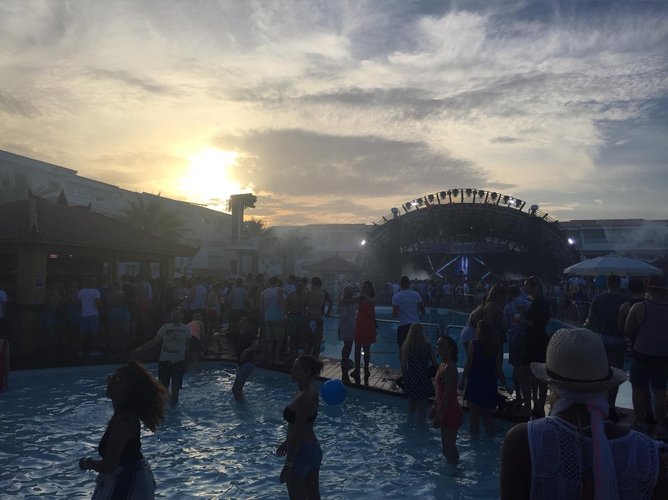
Summertime in Europe equals festivals: people gathered together for music and arts under an open sky. But the very popularity of these events can lead to problems. A new ESA-backed project makes use of smartphones – that essential festival accessory – to help reduce overcrowding, avoid overwhelmed facilities and keep friends together.
Smartphones plus satnav for safer, smarter festivals
27.5.2019 10:15 ESA Navigation
Summertime in Europe equals festivals: people gathered together for music and arts under an open sky. But the very popularity of these events can lead to problems. A new ESA-backed project makes use of smartphones – that essential festival accessory – to help reduce overcrowding, avoid overwhelmed facilities and keep friends together.
ředitel odboru obnovy katastrálního operátu Katastrálního úřadu pro Pardubický kraj
27.5.2019 9:09 ČÚZK /Urady/Katastralni-urady/Katastralni-urady/Katastralni-urad-pro-Pardubicky-kraj/Uredni-deska/Oznameni-a-jina-uredni-sdeleni/Volna-mista/reditel-odboru-obnovy-katastralniho-operatu-Katastředitel odboru obnovy katastrálního operátu Katastrálního úřadu pro Pardubický kraj
27.5.2019 9:09 ČÚZK - volná místa Katastrální úřad pro Pardubický kraj - odbor obnovy katastrálního operátu vypisuje výběrové řízení na místo ředitel odboru obnovy katastrálního operátu Katastrálního úřadu pro Pardubický krajředitel odboru obnovy katastrálního operátu Katastrálního úřadu pro Pardubický kraj
27.5.2019 9:09 ČÚZK - předpisy a opatření Katastrální úřad pro Pardubický kraj - odbor obnovy katastrálního operátuvypisuje výběrové řízení na místo
ředitel odboru obnovy katastrálního operátu Katastrálního úřadu pro Pardubický kraj
Kleos Satellites Launch Window Confirmed – August Lift-off
27.5.2019 8:29 GISCafe.com Webcasts-Webinars HighlightsRocket Lab confirm launch window of August 2019
Kleos’ Scouting Mission satellites assembled, launch pod fit check …
Odborný referent – zápisy v řízení V a Z - ZRVZ1105
27.5.2019 6:18 ČÚZK - předpisy a opatření Katastrální úřad pro Plzeňský kraj - Katastrální pracoviště Plzeň-severvypisuje výběrové řízení na místo
Odborný referent – zápisy v řízení V a Z - ZRVZ1105
Odborný referent – zápisy v řízení V a Z - ZRVZ1105
27.5.2019 6:18 ČÚZK /Urady/Katastralni-urady/Katastralni-urady/Katastralni-urad-pro-Plzensky-kraj/Uredni-deska/Oznameni-a-jina-uredni-sdeleni/Volna-mista/Odborny-referent-–-zapisy-v-rizeni-V-a-Z-ZRVZ110Odborný referent – zápisy v řízení V a Z - ZRVZ1105
27.5.2019 6:18 ČÚZK - volná místa Katastrální úřad pro Plzeňský kraj - Katastrální pracoviště Plzeň-sever vypisuje výběrové řízení na místo Odborný referent – zápisy v řízení V a Z - ZRVZ1105Půdní typ
27.5.2019 2:00 Cenia - Katalog metadat ČR - INSPIRE Mapa půdních typů z dat KPP, mapa velkého měřítka.Dlouhodobý průměrný smyv půdy (G)
27.5.2019 2:00 Cenia - Katalog metadat ČR - INSPIRE Potenciální ohroženost zemědělské půdy vodní erozí – vyjádřená dlouhodobým průměrným smyvem půdy (G) vychází z rovnice USLE (Wischmeier a Smith, 1978) s využitím faktoru ochranného vlivu vegetace C podle klimatických regionů.Hospodářské obvody
27.5.2019 2:00 Cenia - Katalog metadat ČR - INSPIRE Mapa hospodářských obvodů platných v době realizace KPP, mapa velkého měřítka.Půdotvorný substrát
27.5.2019 2:00 Cenia - Katalog metadat ČR - INSPIRE Mapa půdotvorných substrátů z dat KPP, mapa velkého měřítka.Maximálně přípustné hodnoty faktoru ochranného vlivu vegetace a protierozních opatření (Cp.Pp)
27.5.2019 2:00 Cenia - Katalog metadat ČR - INSPIRE Mapa maximálně přípustných hodnot faktoru ochranného vlivu vegetace a protierozních opatření (Cp.Pp).Stupně erozního ohrožení
27.5.2019 2:00 Cenia - Katalog metadat ČR - INSPIRE Vrstva byla vytvořena na základě porovnání vrstev tříd erozní ohroženosti (G) a hodnot přípustného erozního smyvu (Gp). Následně byly zjištěny x-násobky překročení hodnot přípustného erozního smyvu a klasifikovány do kategorií 1 – 4.Hloubka půdy (dle KPP)
27.5.2019 2:00 Cenia - Katalog metadat ČR - INSPIRE Mapa hloubky zemědělské půdy, mapa velkého měřítka.Uzavření Pobočky Blansko dne 31. 5. 2019
27.5.2019 0:00 Státní pozemkový úřad Z provozních důvodů bude v pátek 31. 5. 2019 zcela uzavřena Pobočka Blansko. Dokumenty do podatelny převezme v tento den referentka Státního zemědělského intervenčního fondu, který sídlí na stejném patře v budově Poříčí 18, 678 42 Blansko. Bližší informace získáte na tel. 725 902 972. Děkujeme za pochopení.Uzavření Pobočky Blansko dne 31. 5. 2019
27.5.2019 0:00 Státní pozemkový úřad Z provozních důvodů bude v pátek 31. 5. 2019 zcela uzavřena Pobočka Blansko. Dokumenty do podatelny převezme v tento den referentka Státního zemědělského intervenčního fondu, který sídlí na stejném patře v budově Poříčí 18, 678 42 Blansko. Bližší informace získáte na tel. 725 902 972. Děkujeme za pochopení.Jak na kolejové vozovky prozradil seminář v Olomouci
27.5.2019 0:00 Státní pozemkový úřad Dne 20.5.2019 se v Olomouci uskutečnil seminář na téma „Základy technologie stavby kolejových vozovek“, který uspořádal KPÚ pro Olomoucký kraj, Pobočka Prostějov. Semináře se zúčastnili pracovníci SPÚ z poboček a KPÚ v Moravskoslezském, Olomouckém, Zlínském, Jihomoravském a Pardubickém kraji.UNOOSA and ESA sign MoU to help countries leverage space for the SDGs
26.5.2019 11:00 GISCafe.com Webcasts-Webinars VIENNA, 24 May (UN Information Service) — The United Nations Office for Outer Space Affairs (UNOOSA) and the European …"Bentley Webinar Focuses on Digital Twins" by Susan Smith
26.5.2019 10:48 GISCafe.com Webcasts-WebinarsRobotická stanice Topcon GTL-1000
25.5.2019 14:10 ZeměměřičSpolečnost Topcon, kterou v České republice zastupuje brněnská firma Topgeosys, představila nový kompaktní laserový skener kombinovaný s robotickou stanicí. Zařízení se jmenuje GTL-1000. Dle sdělení firmy Topcon dokáže nový laserový skener naskenovat celý prostor za několik minut. Naskenovaná data jsou zpracována v programu Magnet Collage a poté přenesena do softwaru ClearEdge3D Verity. V tomto programu se mračna bodů automatizovaně […]
The post Robotická stanice Topcon GTL-1000 appeared first on Zeměměřič.
In a First, Pigeon Adds World's First Animal Face Recognition Tech
24.5.2019 16:51 GISCafe.com Webcasts-Webinars You must have seen wayfinding technology that helps navigate visitors in large facilities such as zoos, aquariums, shopping malls, etc. But for the …Zoltek Selected to Chair ASPRS Evaluation for Certification Committee, Re-Elected to Florida ASPRS Board
24.5.2019 16:50 GISCafe.com Webcasts-Webinars The Woolpert senior project manager also was named to the Florida Board of Professional Surveyors and Mappers this month.APOPKA, Fla., May 24, 2019 …
Geografické bibliografie ČR online – GEOBIBLINE v posledních letech [Knihovna geografie, byTopic]
24.5.2019 14:55 Katedra aplikované geoinformatiky a kartografie Přf UK Publikace článku v novém čísle časopisu InflowGeografické bibliografie ČR online – GEOBIBLINE v posledních letech [Knihovna geografie, byTopic]
24.5.2019 14:55 Katedra aplikované geoinformatiky a kartografie Přf UK Publikace článku v novém čísle časopisu ProInflow:Nová verze validátoru pro INSPIRE
24.5.2019 13:25 GeoBusiness Výzkumné centrum JRC uvolnilo novou verzi INSPIRE validátoru, která vedle oprav chyb a nových funkcí obsahuje nové spustitelné testovací sady (ETS) pro prohlížecí služby ... PřečístMayor Krewson and Geospatial Leaders Promoting St. Louis as the Center for Geospatial Excellence
24.5.2019 12:31 GISCafe.com Webcasts-Webinars St. Louis delegation to nation’s largest geospatial gathering “going to battle together for jobs and investment” in the …Winner Announced in Younger Geospatial Professional of the Year Award
24.5.2019 12:24 GISCafe.com Webcasts-Webinars Gabrielle Getz is the winner of the inaugural Younger Geospatial Professional of the Year Award for 2019. Derek Shanks, Product Manager at Trimble …GIS-Pro 2019 Student and Young Professional Opportunities Announced
24.5.2019 12:10 GISCafe.com Webcasts-Webinars May 23, 2019 (Des Plaines, IL) -- In addition to meet-ups and networking events during GIS-Pro 2019 in New Orleans this …Descartes Labs to Demonstrate Global-Scale Predictive Intelligence at GEOINT 2019 Booth #1330
24.5.2019 11:22 GISCafe.com Webcasts-Webinars SANTA FE, New Mexico, 23 May 2019 – Descartes Labs Inc. will demonstrate the predictive intelligence capabilities of its geospatial …odborný referent v oddělení dokumentace katastru nemovitostí Katastrálního pracoviště Pardubice
24.5.2019 10:31 ČÚZK - volná místa Katastrální úřad pro Pardubický kraj - Katastrální pracoviště Pardubice vypisuje výběrové řízení na místo odborný referent v oddělení dokumentace katastru nemovitostí Katastrálního pracoviště Pardubiceodborný referent v oddělení dokumentace katastru nemovitostí Katastrálního pracoviště Pardubice
24.5.2019 10:31 ČÚZK /Urady/Katastralni-urady/Katastralni-urady/Katastralni-urad-pro-Pardubicky-kraj/Uredni-deska/Oznameni-a-jina-uredni-sdeleni/Volna-mista/odborny-referent-v-oddeleni-dokumentace-katastru-nodborný referent v oddělení dokumentace katastru nemovitostí Katastrálního pracoviště Pardubice
24.5.2019 10:31 ČÚZK - předpisy a opatření Katastrální úřad pro Pardubický kraj - Katastrální pracoviště Pardubicevypisuje výběrové řízení na místo
odborný referent v oddělení dokumentace katastru nemovitostí Katastrálního pracoviště Pardubice
Earth from Space
24.5.2019 10:05 ESA Observing the Earth
In this week's edition, explore part of western Pakistan with Copernicus Sentinel-2
Western Pakistan
24.5.2019 10:05 ESA Observing the Earth
Earth observation image of the week: the Copernicus Sentinel-2 mission takes us over western Pakistan and an important wetland area
Nové verze 14.23 k dispozici
24.5.2019 9:47 GEPROZveřejnili jsme verze 14.23 našich produktů MISYS, MISYS-WEB – licenční server, KOKEŠ, Geoportál GEPRO a PROLAND, které přinášejí řadu novinek.… >>
ČÚZK přeruší provoz DP a WSDP
24.5.2019 9:44 GEPROČÚZK plánuje přerušit provoz Dálkového přístupu (DP) a Webových služeb dálkového přístupu (WSDP) v pátek 24.… >>
Aktualizace údajů
24.5.2019 8:40 Ústecký kraj V Geoportálu ÚAP Ústeckého kraje byla provedena aktualizace údajů pro poskytovatele Povodí Vltavy, státní podnik – jev 53 (ZPV Orlík), Ředitelství silnic a dálnic ČR – jev 90, 93 (pouze pro ORP Chomutov), Agentura ochrany přírody a krajiny České republiky – jev 27, 28, 29, 31, 32HxGN LOCAL ČESKO A SLOVENSKO 2019 (program konference)
24.5.2019 8:08 GISportal.cz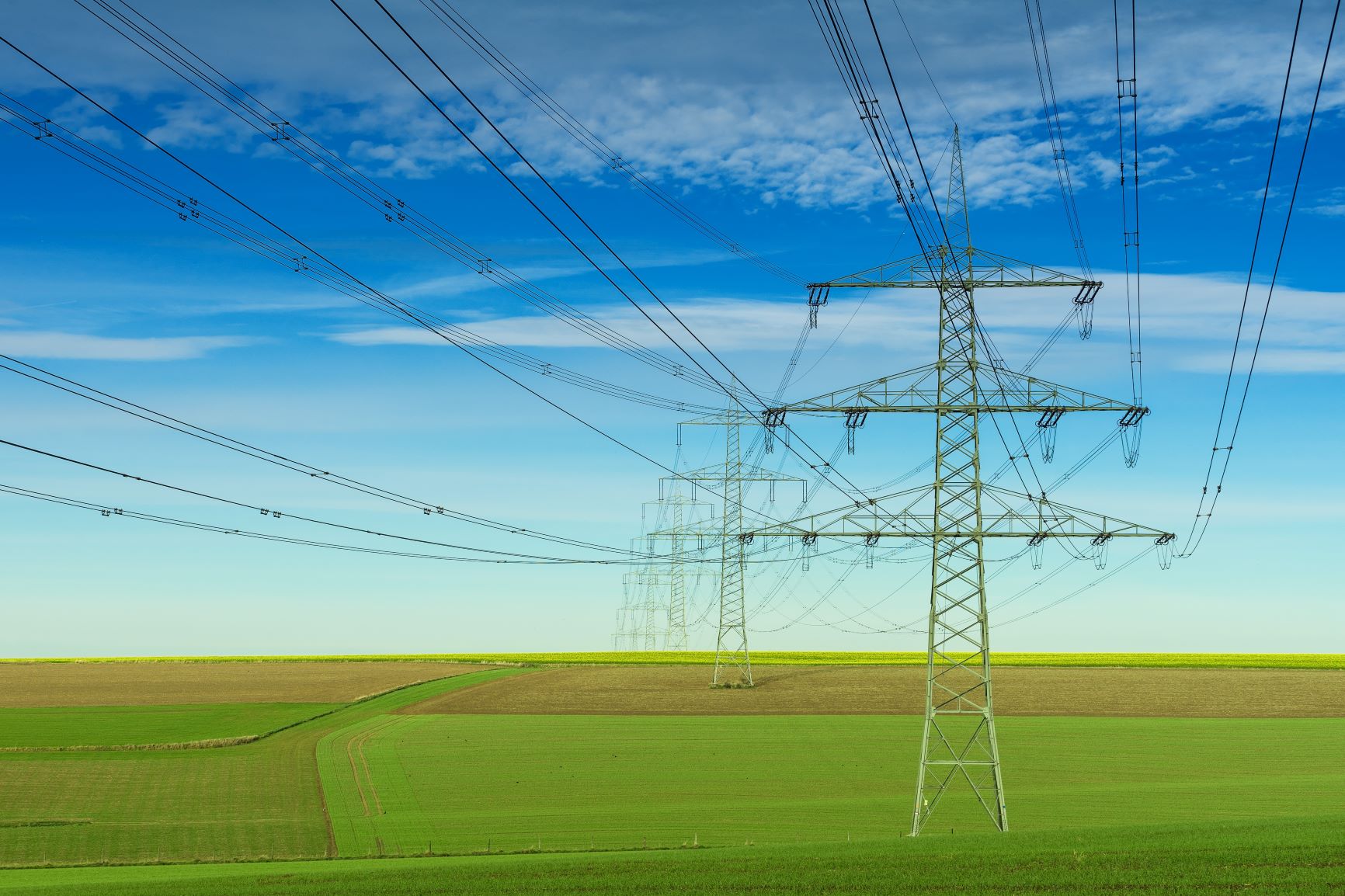
V průběhu letošního ročníku HxGN LOCAL ČESKO A SLOVENSKO 2019 se můžete těšit na aktuální a zajímavá témata napříč oblastmi působení společnosti. První den začne společným dopoledním blokem, kde promluví EMEA viceprezidenti jednotlivých divizí. Odpolední program již bude probíhat odděleně po jednotlivých divizích. Druhý den se uskuteční workshopy, ve kterých se budou organizátoři věnovat praktickým stránkám […]
The post HxGN LOCAL ČESKO A SLOVENSKO 2019 (program konference) appeared first on GISportal.cz.
Česká regionální seismická síť ČRSS
24.5.2019 2:00 Cenia - Katalog metadat ČR - INSPIRE Seismické digitální záznamy z profilových měření provedených v rámci 3 seismických refrakčních experimentů na území střední Evropy v letech 2000-2003: CELEBRATION 2000, ALP 2002, a SUDETES 2003Maxar Selected to Build, Fly First Element of NASA’s Lunar Gateway
24.5.2019 1:50 GISCafe.com Webcasts-Webinars Maxar partners with Blue Origin and Draper to design, build anddemonstrate operations of a spacecraft that could support returning
…
HPE Delivers Q2 Results & Raises FY19 EPS Outlook
24.5.2019 1:50 GISCafe.com Webcasts-Webinars Q2 2019 Financial Highlights:Revenue: $7.2 billion
Diluted Net Earnings Per Share:
…
HP Inc. Reports Fiscal 2019 Second Quarter Results
24.5.2019 1:50 GISCafe.com Webcasts-Webinars PALO ALTO, Calif., May 23, 2019 (GLOBE NEWSWIRE) -- HP (NYSE: HPQ)Second quarter GAAP diluted net earnings per share ("EPS") of $0.51, …
Autodesk, Inc. Announces Fiscal 2020 First Quarter Results
24.5.2019 1:50 GISCafe.com Webcasts-Webinars Strong Growth Across All Regions; Momentum in Construction Drives Cloud ARR Up 164%SAN RAFAEL, Calif., May 23, 2019 — (PRNewswire) — …
Výzva k podání návrhu - Přímětice
24.5.2019 0:00 Státní pozemkový úřad SPÚ vyhlašuje výzvu k podání návrhů na uzavření pachtovní smlouvy - kú PříměticeMezi kanály a krátery
23.5.2019 19:51 Český Kosmický PortálMars byl kdysi považovaný za protkaný systémem zavlažovacích kanálů - tmavých žlabů, které se roztahovaly po povrchu planety a které byly vykopány inteligentní společností žíznivých marťanů. Astronom, který tuto myšlenku prosazoval, propůjčil své jméno kráteru na jednom z nejnovějších snímků sondy ESA Mars Express. Ten se jmenuje Lowellův kráter.
MyGalileoApp : top 30 revealed!
23.5.2019 18:09 European GNSS Agency
The top 30 applications, recently selected to advance to the next round of the MyGalileoApp competition, have now been revealed. The projects cover a range of applications that leverage Galileo’s added accuracy to provide solutions to social and environmental challenges. You can check out the full list here.
The 30 shortlisted projects were selected from a total of 148 submissions based on their level of innovation. Their market potential, their technical feasibility and the extent to which they leverage Galileo.
The shortlisted projects cover eight of the 11 innovation areas open to submissions. The innovation areas with the most selected projects in the second round of the competition are Mapping, GIS and Agriculture, with a total of eight projects, followed by Augmented Reality and Games, with four.
A taste of what to expect
The applications target a wide range of societal and environmental challenges and needs. The need to move more efficiently around our cities is something we have all experienced. Addressing this, one of the apps in this year’s competition monitors traffic lights and provides optimal speed recommendations, enabling drivers to arrive at the lights just as they turn green. Another matches people looking for parking spots with others leaving a spot, reducing headaches for drivers and benefitting retailers in areas with bad parking conditions.
It’s not just smart mobility needs that are addressed – one app helps farmers to visualise their in-field positions, providing constant feedback to optimise their work, while another helps drone users perfect their skills, supporting them in taking the best flight decisions.
There when you need it
One team is developing an app that sends distress signals even when the user is no longer able to access the device. Another crowdsources the location of your favourite products and delicatessens, while another integrates augmented reality and blockchain for geomarketing and an out-of-this world customer experience.
Mixing gamification, crowdsourcing and positioning can lead users to new worlds, but also help them experience their familiar spots in a completely different way, or empower users to overcome obstacles and find a tailored experience that suits their needs.
All in all, the applications in this year’s competition are impressive in terms of the range and scope of the challenges that the address, they might not change the world, but they certainly have the potential to become solutions that improve our lives, make our societies more inclusive and help protect the environment.
Next steps
The 30 selected projects will now work on developing a beta version of their app until 15 July 2019. The beta versions will then be reviewed and the 30 shortlisted projects will be narrowed down further, with a maximum of 10 teams being selected to advance to the second development phase.
During the second development phase the projects should work on delivering a finalised version of their app with 100% functionality and a report of testing results. At the end of the phase, the application should be already available for download on the Google Play and Apple platforms.
The best ranked projects from the second development phase will be invited to the finals, to be held in October 2019, where they will present their application to the GSA evaluation board. Following the presentations, theaward will take place, with the first-place winner receiving a EUR 100,000 prize. The runner up and third place finishers will receive EUR 50,000 and EUR 30,000 respectively.
Information partners
MyGalileoApp has three key information partners. Geoawesomeness is a blog about geospatial technologies and everything related to them, providing constructive commentary on all that is happening in the geo-industry. Secondly, Aerospace Valley is a major innovation cluster in France in the fields of aeronautics, space and embedded systems, with members from industry and academia. Finally, Spaceoneers, an initiative of Design & Data GmbH, seeks to spur creativity and innovation within the space sector in Europe.
"Geoawesomeness is delighted to see the creativity and ingenuity of the 30 shortlisted projects to emerge from the MyGalileoApp competition. At Geoawesomeness, we are always on the lookout for the next big idea in the Geospatial industry and these shortlisted projects certainly have us excited! We wish the teams the very best for the next stages," Managing Editor Muthukumar Kumar said.
Philippe Lattes, deputy director for Space Sector at Aerospace Valley commented: “At Aerospace Valley we are supporting startup creation and development of new services using space. Acting together with a European Agency like GSA is a powerful way to support young startups and promote European innovations.”
Spaceoneers Editor-in-Chief Ryan Laird had this to say: “At Spaceoneers we are always keen to follow the creativity and innovation within the space sector in Europe. We’re very excited to see the diversity of ideas from this competition and look forward to following the next stages.”
Media note: This feature can be republished without charge provided the European GNSS Agency (GSA) is acknowledged as the source at the top or the bottom of the story. You must request permission before you use any of the photographs on the site. If you republish, we would be grateful if you could link back to the GSA website (http://www.gsa.europa.eu).
MyGalileoApp : top 30 revealed!
23.5.2019 18:09 European GNSS Agency
The top 30 applications, recently selected to advance to the next round of the MyGalileoApp competition, have now been revealed. The projects cover a range of applications that leverage Galileo’s added accuracy to provide solutions to social and environmental challenges. You can check out the full list here.
The 30 shortlisted projects were selected from a total of 148 submissions based on their level of innovation. Other key criteria taken into consideration included their market potential, their technical feasibility and the extent to which they leverage Galileo.
The shortlisted projects cover eight of the 11 innovation areas open to submissions. The innovation areas with the most selected projects in the second round of the competition are Mapping, GIS and Agriculture, with a total of eight projects, followed by Augmented Reality and Games, with four.
A taste of what to expect
The applications target a wide range of societal and environmental challenges and needs. The need to move more efficiently around our cities is something we have all experienced. Addressing this, one of the apps in this year’s competition monitors traffic lights and provides optimal speed recommendations, enabling drivers to arrive at the lights just as they turn green. Another matches people looking for parking spots with others leaving a spot, reducing headaches for drivers and benefitting retailers in areas with bad parking conditions.
It’s not just smart mobility needs that are addressed – one app helps farmers to visualise their in-field positions, providing constant feedback to optimise their work, while another helps drone users perfect their skills, supporting them in taking the best flight decisions.
There when you need it
One team is developing an app that sends distress signals even when the user is no longer able to access the device. Another crowdsources the location of your favourite products and delicatessens, while another integrates augmented reality and blockchain for geomarketing and an out-of-this world customer experience.
Mixing gamification, crowdsourcing and positioning can lead users to new worlds, but also help them experience their familiar spots in a completely different way, or empower users to overcome obstacles and find a tailored experience that suits their needs.
All in all, the applications in this year’s competition are impressive in terms of the range and scope of the challenges that the address, they might not change the world, but they certainly have the potential to become solutions that improve our lives, make our societies more inclusive and help protect the environment.
Next steps
The 30 selected projects will now work on developing a beta version of their app until 15 July 2019. The beta versions will then be reviewed and the 30 shortlisted projects will be narrowed down further, with a maximum of 10 teams being selected to advance to the second development phase.
During the second development phase the projects should work on delivering a finalised version of their app with 100% functionality and a report of testing results. At the end of the phase, the application should be already available for download on the Google Play and Apple platforms.
The most creative and innovative projects from the second development phase will be invited to the finals, to be held in October 2019, where they will present their application to the GSA evaluation board. Following the presentations, the judges will announce the winners, with the first-place winner receiving a EUR 100,000 prize. The runner up and third place finishers will receive EUR 50,000 and EUR 30,000 respectively.
Information partners
MyGalileoApp has three key information partners. Geoawesomeness is a blog about geospatial technologies and everything related to them, providing constructive commentary on all that is happening in the geo-industry. Secondly, Aerospace Valley is a major innovation cluster in France in the fields of aeronautics, space and embedded systems, with members from industry and academia. Finally, Spaceoneers, an initiative of Design & Data GmbH, seeks to spur creativity and innovation within the space sector in Europe.
"Geoawesomeness is delighted to see the creativity and ingenuity of the 30 shortlisted projects to emerge from the MyGalileoApp competition. At Geoawesomeness, we are always on the lookout for the next big idea in the Geospatial industry and these shortlisted projects certainly have us excited! We wish the teams the very best for the next stages," Managing Editor Muthukumar Kumar said.
Philippe Lattes, deputy director for Space Sector at Aerospace Valley commented: “At Aerospace Valley we are supporting startup creation and development of new services using space. Acting together with a European Agency like GSA is a powerful way to support young startups and promote European innovations.”
Spaceoneers Editor-in-Chief Ryan Laird had this to say: “At Spaceoneers we are always keen to follow the creativity and innovation within the space sector in Europe. We’re very excited to see the diversity of ideas from this competition and look forward to following the next stages.”
Media note: This feature can be republished without charge provided the European GNSS Agency (GSA) is acknowledged as the source at the top or the bottom of the story. You must request permission before you use any of the photographs on the site. If you republish, we would be grateful if you could link back to the GSA website (http://www.gsa.europa.eu).
MyGalileoApp : top 30 revealed!
23.5.2019 18:09 European GNSS Agency
The top 30 applications, recently selected to advance to the next round of the MyGalileoApp competition, have now been revealed. The projects cover a range of applications that leverage Galileo’s added accuracy to provide solutions to social and environmental challenges. You can check out the full list here.
The 30 shortlisted projects were selected from a total of 148 submissions based on their level of innovation. Their market potential, their technical feasibility and the extent to which they leverage Galileo.
The shortlisted projects cover eight of the 11 innovation areas open to submissions. The innovation areas with the most selected projects in the second round of the competition are Mapping, GIS and Agriculture, with a total of eight projects, followed by Augmented Reality and Games, with four.
A taste of what to expect
The applications target a wide range of societal and environmental challenges and needs. The need to move more efficiently around our cities is something we have all experienced. Addressing this, one of the apps in this year’s competition monitors traffic lights and provides optimal speed recommendations, enabling drivers to arrive at the lights just as they turn green. Another matches people looking for parking spots with others leaving a spot, reducing headaches for drivers and benefitting retailers in areas with bad parking conditions.
It’s not just smart mobility needs that are addressed – one app helps farmers to visualise their in-field positions, providing constant feedback to optimise their work, while another helps drone users perfect their skills, supporting them in taking the best flight decisions.
There when you need it
One team is developing an app that sends distress signals even when the user is no longer able to access the device. Another crowdsources the location of your favourite products and delicatessens, while another integrates augmented reality and blockchain for geomarketing and an out-of-this world customer experience.
Mixing gamification, crowdsourcing and positioning can lead users to new worlds, but also help them experience their familiar spots in a completely different way, or empower users to overcome obstacles and find a tailored experience that suits their needs.
All in all, the applications in this year’s competition are impressive in terms of the range and scope of the challenges that the address, they might not change the world, but they certainly have the potential to become solutions that improve our lives, make our societies more inclusive and help protect the environment.
Next steps
The 30 selected projects will now work on developing a beta version of their app until 15 July 2019. The beta versions will then be reviewed and the 30 shortlisted projects will be narrowed down further, with a maximum of 10 teams being selected to advance to the second development phase.
During the second development phase the projects should work on delivering a finalised version of their app with 100% functionality and a report of testing results. At the end of the phase, the application should be already available for download on the Google Play and Apple platforms.
The best ranked projects from the second development phase will be invited to the finals, to be held in October 2019, where they will present their application to the GSA evaluation board. Following the presentations, theaward will take place, with the first-place winner receiving a EUR 100,000 prize. The runner up and third place finishers will receive EUR 50,000 and EUR 30,000 respectively.
Information partners
MyGalileoApp has three key information partners. Geoawesomeness is a blog about geospatial technologies and everything related to them, providing constructive commentary on all that is happening in the geo-industry. Secondly, Aerospace Valley is a major innovation cluster in France in the fields of aeronautics, space and embedded systems, with members from industry and academia. Finally, Spaceoneers, an initiative of Design & Data GmbH, seeks to spur creativity and innovation within the space sector in Europe.
"Geoawesomeness is delighted to see the creativity and ingenuity of the 30 shortlisted projects to emerge from the MyGalileoApp competition. At Geoawesomeness, we are always on the lookout for the next big idea in the Geospatial industry and these shortlisted projects certainly have us excited! We wish the teams the very best for the next stages," Managing Editor Muthukumar Kumar said.
Philippe Lattes, deputy director for Space Sector at Aerospace Valley commented: “At Aerospace Valley we are supporting startup creation and development of new services using space. Acting together with a European Agency like GSA is a powerful way to support young startups and promote European innovations.”
Spaceoneers Editor-in-Chief Ryan Laird had this to say: “At Spaceoneers we are always keen to follow the creativity and innovation within the space sector in Europe. We’re very excited to see the diversity of ideas from this competition and look forward to following the next stages.”
Media note: This feature can be republished without charge provided the European GNSS Agency (GSA) is acknowledged as the source at the top or the bottom of the story. You must request permission before you use any of the photographs on the site. If you republish, we would be grateful if you could link back to the GSA website (http://www.gsa.europa.eu).
thinkWhere Online Mapping Tool Helps Falkirk Residents Access Essential Services
23.5.2019 17:35 GISCafe.com Webcasts-Webinars May 23, 2019 -- Scotland’s Falkirk Council has rolled out a new online service that signposts essential services such as food banks, digital …Topcon Announces Next Generation Flight Planning Software
23.5.2019 17:34 GISCafe.com Webcasts-Webinars LIVERMORE, Calif. & CAPELLE A/D IJSSEL, Netherlands — (BUSINESS WIRE) — May 22, 2019 —Topcon Positioning Group …
iGeolise Raise £3.2m Investment for Their Location Search and Mapping API
23.5.2019 17:34 GISCafe.com Webcasts-Webinars LONDON, May 23, 2019 — (PRNewswire) — Today iGeolise announce £3.2 million funding from ETF Partners. iGeolise are the creators of the …Qatar Centre for GIS Partners with Esri to Develop Its National Mapping Strategy
23.5.2019 17:34 GISCafe.com Webcasts-Webinars Esri Will Help CGIS Modernize Infrastructure Operations andDevelopment
REDLANDS, Calif. — (BUSINESS WIRE) — May 23, 2019 …
Esri Poster Contest Winners Announced at AAG Annual Meeting
23.5.2019 17:34 GISCafe.com Webcasts-Webinars Winning Submissions Showcase Pioneering Uses of Esri TechnologyREDLANDS, Calif. — (BUSINESS WIRE) — May 23, 2019 …
Přednáška: Prof. Howard Epstein [Katedra aplikované geoinformatiky a kartografie, byTopic]
23.5.2019 16:50 Katedra aplikované geoinformatiky a kartografie Přf UK Zveme vás na přednášku našeho zahraničního hosta Howarda Epsteina, profesora z University of Virginia, Department of Environmental Sciences, Charlottesville, Virginia, USA, s názvem: " Recent dynamics of arctic tundra vegetation ". Seminář se koná v místnosti KFR, Viničná 5, Praha 2, Katedra experimentální biologie rostlin 30.5.2019, 10:30 hod.Přednáška: Prof. Howard Epstein [Katedra aplikované geoinformatiky a kartografie, byTopic]
23.5.2019 16:50 Katedra aplikované geoinformatiky a kartografie Přf UK Zveme vás na přednášku našeho zahraničního hosta Howarda Epsteina, profesora z University of Virginia, Department of Environmental Sciences, Charlottesville, Virginia, USA, s nazvem: " Recent dynamics of arctic tundra vegetation ". Seminář se koná v místnosti KFR, Viničná 5, Praha 2, Katedra experimentální biologie rostlin 30.5.2019, 10:30 hod.Exkurze studentů SPŠ Zeměměřická
23.5.2019 15:58 HrdličkaAkce se zúčastnilo deset nejšikovnějších studentů napříč 1. až 3. ročníkem. Studentům jsme ukázali zaměření budovy, dron a 3D scanner, následně si mohli prohlédnout zpracování dat. Studentům se věnovali Martin Smetana, Tomáš Roček a Míla Srp, tímto jim děkujeme za skvělou reprezentaci naší firmy. Příští rok bychom některé ze studentů rádi přivítali na odborné praxi... View Article
The post Exkurze studentů SPŠ Zeměměřická appeared first on HRDLIČKA spol. s r.o. - komplexní služby v oblasti geodézie.
Nefunkčnost mapových služeb při údržbě
23.5.2019 15:15 Jihočeský kraj Od pátku 24.5.2019 (od 16 hodin) do neděle 26.5.2019 bude prováděn upgrade na serverových komponentách Geoportálu. V této době nebudou všechny služby a aplikace Geoportálu v provozu. Děkujeme za pochopení.Bentley Systems acquires Keynetix
23.5.2019 15:04 Bentley SystemsPress Coverage
Roads & Infrastructure Australia, Australia/New Zealand
Read the articleBentley Systems acquires geotechnical tech company
23.5.2019 15:01 Bentley SystemsPress Coverage
Inside Construction, Australia/New Zealand
Read the articleOznámení o přerušení dodávky el. energie na katastrálním pracovišti Valašské Meziříčí
23.5.2019 13:48 ČÚZK - předpisy a opatření Katastrální úřad pro Zlínský kraj - Katastrální pracoviště Valašské Meziříčízveřejnil novou aktualitu: Podle oznámení společnosti ČEZ bude dne 3.6.2019 na adrese 40. pluku 1351 plánovaná odstávka el. energie od 7:30 do 19:30 hod. V tento den budou přijatá pouze písemná podání na podatelně katastrálního pracoviště. Bližší informace k této události lze nalézt na úřední desce.
Pozvánka na vernisáž Kartografie v časech mezi poustevnami a koněspřežkou [Knihovna geografie, byTopic]
23.5.2019 13:35 Katedra aplikované geoinformatiky a kartografie Přf UK Vernisáž: 28. 5. 2019 v 17,00 h.AUTO osobní terénní VAZ 21214 NIVA
23.5.2019 12:20 Zeměměřický úřadZeměměřický úřad nabízí nepotřebný majetek k odkupu. Jedná se o
AUTO osobní terénní VAZ 21214 NIVA
AUTO osobní terénní VAZ 21214 NIVA
23.5.2019 12:20 ČÚZK /Urady/Zememericky-urad/Nabidka-majetku/AUTO-osobni-terenni-VAZ-21214-NIVAAUTO osobní terénní VAZ 21214 NIVA
23.5.2019 12:20 ČÚZK - předpisy a opatřeníZeměměřický úřad nabízí nepotřebný majetek k odkupu. Jedná se o
AUTO osobní terénní VAZ 21214 NIVA
20190523 rada/odborný rada oddělení právních vztahů k nemovitostem
23.5.2019 11:52 ČÚZK - předpisy a opatření Katastrální úřad pro Středočeský kraj - Katastrální pracoviště Mělník Vyhlášení výběrového řízení: rada/odborný rada oddělení právních vztahů k nemovitostem V části "Úřední deska", v sekci "Oznámení a jiná úřední sdělení" bylo vystaveno "Oznámení o vyhlášení výběrového řízení na obsazení služebního místa rada/odborný rada oddělení právních vztahů k nemovitostem"20190523 rada/odborný rada oddělení právních vztahů k nemovitostem
23.5.2019 11:52 ČÚZK /Urady/Katastralni-urady/Katastralni-urady/Katastralni-urad-pro-Stredocesky-kraj/Katastralni-pracoviste/KP-Melnik/O-uradu/Aktuality/20190503-Rada-odborny-rada-oddeleni-pravnich-vztahrada/odborný rada oddělení právních vztahů k nemovitostem
23.5.2019 11:51 ČÚZK - volná místa Katastrální úřad pro Středočeský kraj - Katastrální pracoviště Mělník vypisuje výběrové řízení na místo rada/odborný rada oddělení právních vztahů k nemovitostemrada/odborný rada oddělení právních vztahů k nemovitostem
23.5.2019 11:51 ČÚZK /Urady/Katastralni-urady/Katastralni-urady/Katastralni-urad-pro-Stredocesky-kraj/Uredni-deska/Oznameni-a-jina-uredni-sdeleni/Volna-mista/rada-odborny-rada-oddeleni-pravnich-vztahu-k-n-(1)rada/odborný rada oddělení právních vztahů k nemovitostem
23.5.2019 11:51 ČÚZK - volná místa Český úřad zeměměřický a katastrální - Katastrální pracoviště Mělník vypisuje výběrové řízení na místo rada/odborný rada oddělení právních vztahů k nemovitostemrada/odborný rada oddělení právních vztahů k nemovitostem
23.5.2019 11:51 ČÚZK - předpisy a opatření Český úřad zeměměřický a katastrální - Katastrální pracoviště Mělníkvypisuje výběrové řízení na místo rada/odborný rada oddělení právních vztahů k nemovitostem
rada/odborný rada oddělení právních vztahů k nemovitostem
rada/odborný rada oddělení právních vztahů k nemovitostem
23.5.2019 11:51 ČÚZK - předpisy a opatření Katastrální úřad pro Středočeský kraj - Katastrální pracoviště Mělníkvypisuje výběrové řízení na místo rada/odborný rada oddělení právních vztahů k nemovitostem
rada/odborný rada oddělení právních vztahů k nemovitostem
20190523 Odborný rada oddělení právních vztahů k nemovitostem
23.5.2019 11:40 ČÚZK - předpisy a opatření Katastrální úřad pro Středočeský kraj - Katastrální pracoviště Benešov Vyhlášení výběrového řízení: Odborný rada oddělení právních vztahů k nemovitostem V části "Úřední deska", v sekci "Oznámení a jiná úřední sdělení" bylo vystaveno "Oznámení o vyhlášení výběrového řízení na obsazení služebního místa Odborný rada oddělení právních vztahů k nemovitostem"20190523 Odborný rada oddělení právních vztahů k nemovitostem
23.5.2019 11:40 ČÚZK /Urady/Katastralni-urady/Katastralni-urady/Katastralni-urad-pro-Stredocesky-kraj/Katastralni-pracoviste/KP-Benesov/O-uradu/Aktuality/20190503-Rada-odborny-rada-oddeleni-pravnich-vztahOdborný rada oddělení právních vztahů k nemovitostem
23.5.2019 11:39 ČÚZK - předpisy a opatření Katastrální úřad pro Středočeský kraj - Katastrální pracoviště Benešovvypisuje výběrové řízení na místo Odborný rada oddělení právních vztahů k nemovitostem
Odborný rada oddělení právních vztahů k nemovitostem
Odborný rada oddělení právních vztahů k nemovitostem
23.5.2019 11:39 ČÚZK - volná místa Katastrální úřad pro Středočeský kraj - Katastrální pracoviště Benešov vypisuje výběrové řízení na místo Odborný rada oddělení právních vztahů k nemovitostemOdborný rada oddělení právních vztahů k nemovitostem
23.5.2019 11:39 ČÚZK - předpisy a opatření Český úřad zeměměřický a katastrální - Katastrální pracoviště Benešovvypisuje výběrové řízení na místo Odborný rada oddělení právních vztahů k nemovitostem
Odborný rada oddělení právních vztahů k nemovitostem
Odborný rada oddělení právních vztahů k nemovitostem
23.5.2019 11:39 ČÚZK - volná místa Český úřad zeměměřický a katastrální - Katastrální pracoviště Benešov vypisuje výběrové řízení na místo Odborný rada oddělení právních vztahů k nemovitostem20190523 Vrchní referent/rada – správce informačních a komunikačních technologií – informatik
23.5.2019 11:11 ČÚZK /Urady/Katastralni-urady/Katastralni-urady/Katastralni-urad-pro-Stredocesky-kraj/Katastralni-pracoviste/KP-Pribram/O-uradu/Aktuality/20190503-Rada-odborny-rada-oddeleni-pravnich-vztah20190523 Vrchní referent/rada – správce informačních a komunikačních technologií – informatik
23.5.2019 11:11 ČÚZK - předpisy a opatření Katastrální úřad pro Středočeský kraj - Katastrální pracoviště Příbram Vyhlášení výběrového řízení: Vrchní referent/rada – správce informačních a komunikačních technologií – informatik V části "Úřední deska", v sekci "Oznámení a jiná úřední sdělení" bylo vystaveno "Oznámení o vyhlášení výběrového řízení na obsazení služebního místa Vrchní referent/rada – správce informačních a komunikačních technologií – informatik"Vrchní referent/rada – správce informačních a komunikačních technologií – informatik
23.5.2019 11:08 ČÚZK - volná místa Katastrální úřad pro Středočeský kraj - Katastrální pracoviště Příbram vypisuje výběrové řízení na místo Vrchní referent/rada – správce informačních a komunikačních technologií – informatikVrchní referent/rada – správce informačních a komunikačních technologií – informatik
23.5.2019 11:08 ČÚZK - předpisy a opatření Katastrální úřad pro Středočeský kraj - Katastrální pracoviště Příbramvypisuje výběrové řízení na místo Vrchní referent/rada – správce informačních a komunikačních technologií – informatik
Vrchní referent/rada – správce informačních a komunikačních technologií – informatik



